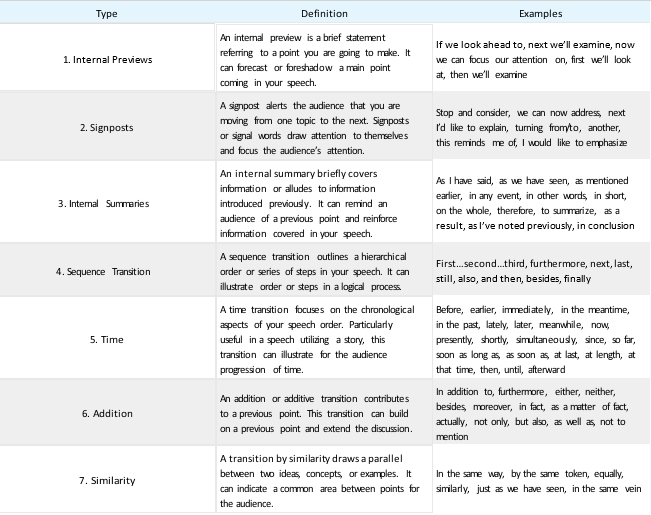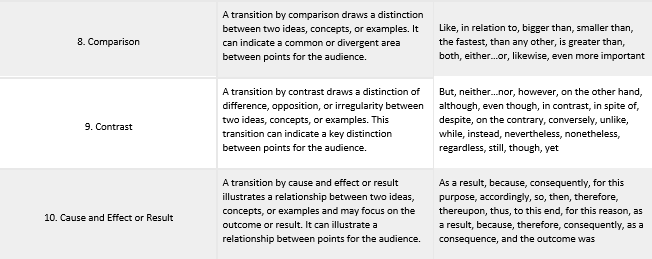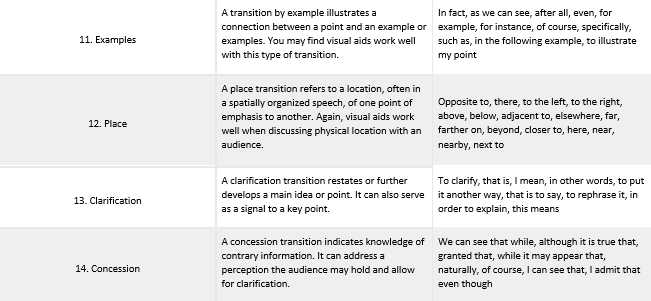Learning Objectives
Understand and demonstrate how to use transitions effectively within your speech.
By now, you have identified your main points, chosen your organizational model, and are ready to begin putting your speech together. If you were going to build a house, you would need a strong foundation. Could the columns and beams hold your roof in place without anything to keep them from falling down? Of course not. In the same way, the columns or beams are like the main ideas of your speech, and identifying them is one important step. Another is to consider how to position them securely to rest on a solid foundation, have sufficient connection to each other to become interdependent, and ensure they stay where you want them to so your house or your speech doesn’t come crashing down.
Transitions are words, phrases, or visual devices that help the audience follow the speaker’s ideas, connect the main points to each other, and see the relationships you’ve created in the information you are presenting. They are often described as bridges between ideas, thoughts, or concepts, providing some sense of where you’ve been and where you are going with your speech. Transitions are used by the speaker to guide the audience in the progression from one significant idea, concept, or point to the next issue. They can also show the relationship between the main point and the support the speaker uses to illustrate, provide examples for, or reference outside sources. Transitions can serve different roles depending on your purpose as you help create the glue that will connect your points in a way the audience can easily follow.



Table 12.6.1 is a summary of fourteen distinct types of transitions. As you contemplate how to bring together your information, consider how you will use various transitions and note them on your outline.
Key Takeaway
A speech needs transitions to help the audience understand how the speaker’s main ideas are connected to one another.
Exercises
Visit the library or do an Internet search to find a speech that teaches you one new skill or idea. The speech may be published in a book or newspaper, recorded as an audio file, or recorded on video. Read or listen to the speech and identify the speaker’s transitions.
Listen to your favorite comedian. Write a brief summary of how the comedian transitions from topic to topic. Share and compare with classmates.
Listen to a conversation with friends and observe how they transition from topic to topic. Write a brief summary. Share and compare with classmates.
This page titled 12.6: Transitions is shared under a CC BY-NC-SA 3.0 license and was authored, remixed, and/or curated by Anonymous (LibreTexts Staff), from which source content was edited to the style and standards of the Pressbook platform licensed under a Creative Commons Attribution-NonCommercial-ShareAlike 4.0 International License by Brandi Schur.

